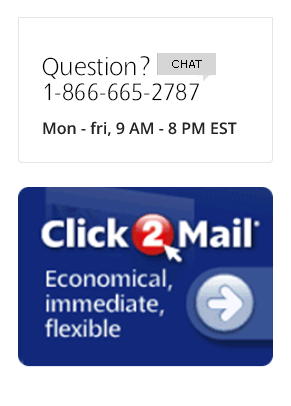There’s no doubting that online marketing has taken the world by storm. Not only is online video consumption reigning supreme over traditional TV viewership, but it seems the world has gone mad for—and forgot about—the value still held in offline marketing.
One of those offline tactics is direct mail: sending letters, postcards, and notes to the mailbox of your ideal customer.
With the rise in popularity of online mailboxes, the ones stood outside your door get a bad reputation. Emails deliver discount codes for your favorite shops, but IRL-mailbox space is filled with bills, right?
Not necessarily.
Here’s why direct marketing should form part of your strategy in 2018 and three brands who’ve set a fitting example.
What can direct mail marketing offer that online marketing can’t?
Online marketing is great, but its offline alternative has been proven to drive better results.
It’s easier for customers
One reason direct mail marketing is more effective is because it’s easier to understand. One study found it takes 21% less cognitive effort to process, meaning your audience don’t have to invest time (and brainpower) into your mail.
The success of any marketing campaign—whether it be online or offline—depends on how it resonates with your ideal audience. If they’re finding it tough to understand or become confused at any point, it’s unlikely to meet your objectives.
Direct mail is more memorable
Think back to some of the greatest advertising campaigns you’ve seen in the last 10 years. Chances are, you’ll roll a handful of brand names off the tip of your tongue, without a Google search in sight.
The brands you’ve listed nailed their marketing campaign; it had a long-lasting effect on you. Direct mail marketing is proven to be better at this than the virtual alternative.
It’s been found that millennials who spend more time with physical ads have a stronger emotional response, leading to better memory of them. You could be on the list of the next generation’s most-loved advertising campaigns by optimizing your use of direct mail.
It has a better response rate
Earlier, we briefly mentioned that people often prefer virtual mailboxes to those outside their homes. But, that doesn’t mean the online version is more effective.
Direct mail has a better response rate than email marketing, with 4.4% of campaigns receiving a response when delivered through the mail, compared to just 0.12% online.
That means that in a campaign delivered to 1,000 people, 43 more people will interact with your direct mail than your emails.
You’re missing out if you push your entire marketing budget into email—especially when direct mail can be more cost-effective.
3 key tips to create a successful direct mail campaign
Want to stand out from the crowd and make sure you pull off a marketing campaign that drives a high ROI? Here are three tips.
1. Be creative
Direct mail empowers you to be creative. Don’t just fire off a boring letter that could get mixed up with a target’s bills; create something nobody has seen before. Throw a party in their mailbox!
You can do this by sending:
- Foldable origami
- Customized postcard designs
- Interactive letters, where your audience needs to do something to reveal a message
A fantastic example of creative direct mail marketing comes from the team behind World Water Day’s campaign. Their aim was to raise awareness about the event, but they opted to create a direct mail with words that only became visible when soaked in water.

Direct mail marketing example
Not only did this direct mail campaign explain their aim creatively, but it became an interactive piece of content. Interactive content has been proven to generate 2x more conversions than its passive alternative. Genius, right?
2. Make your audience feel something
The second way to ensure your direct mail marketing campaign is a success is to make your audience feel something. Emotion has been the marketer’s secret weapon for years. Various studies show that people rely on emotions, not just logical information, to make buying decisions.
Feelings of anger, disgust, affirmation, and fear often top the list of emotions that work well in advertising.
A fantastic example of this comes from the Natural History Museum. In an attempt to educate local people about the danger of animal extinction, they sent an eraser to their audience with a quote about the topic.

Direct mail marketing example
Because their audience could see a visual representation of extinction in their daily lives, it made them stop to think about how serious it is… and want to act.
Pick an emotion and drive it home through your next direct mail campaign. You’ll soon see the impact emotion has on marketing—but the victories will be for your own brand.
3. Make it unique
For the most part, mailboxes aren’t fun environments. Bills, bank statements, and unwanted letters clog up this marketing route, but you can stand out by making your direct mail campaign unique.
A fantastic way to do this is through juxtaposition. Can you think of a smart, innovative way to show how powerful your offering is by comparing it to something completely different?
Let’s take this direct mail campaign for example. Created by the theatre team behind a local performance of Macbeth, they wanted people to visit their show. Instead of online marketing, they exploited their direct mail opportunity and found a way to stand out in a mailbox.

Direct mail marketing example
You’d probably never compare a Shakespeare play to a fast food joint… but that’s why it works.
The juxtaposition of both elements makes you take a second take at the direct mail, rather than toss it in the trash. It’s bound to make an impact on their audience, who possibly have an interest in both but would never expect them to be paired together.
– Elise Dopson
Ludicapress





